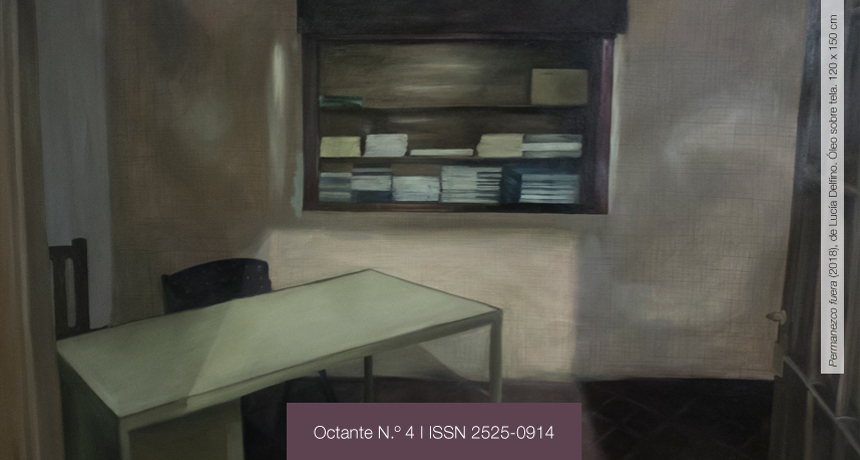Medieval Plaster Casts at the Faculty of Fine Arts. Historical and Iconographic Research
DOI:
https://doi.org/10.24215/25250914e038Keywords:
plaster casts, calendar cylce, iconographyAbstract
In this article, we present a summary of a work that deals with the historical-artistic investigation of the iconographic type to which a set of plasters conform suites. The pieces belong to the collection of the Museum, Exhibitions and Conservation Area of the Faculty of Fine Arts (FBA) of the National University of La Plata (UNLP). It deals with three plasters molded at the moulage factory of the Museum of Comparative Sculpture in Paris, whose originals are reliefs corresponding to the calendar cycle sculpted in one of the portals of the Notre-Dame cathedral of Paris.Downloads
References
Cohen, S. (2014). Transformations of Time and Temporality in Medieval and Renaissance Art [Transformaciones del tiempo y la temporalidad en el arte medieval y renacentista]. Leiden, Holanda/Boston, Estados Unidos: Brill.
Desenclos, R. (2013). Notre-Dame - Le Portail de la Vierge - Zodiaque et Travaux [Fotografía]. Recuperado de http://paristoric.com/index.php/musees-et-religions/notre-dame-de-paris/4068-notre-dame-le-portailde-la-vierge-zodiaque-et-saisons
Enlart, C. y Roussel, J. (1910). Catalogue General Illustré du Musée de Sculpture Comparée au Palais du Trocadéro (Moulages) [Catálogo general Ilustrado del Museo de Escultura Comparada en el Palacio del Trocadero (Calcos)]. Recuperado de http://gallica.bnf.fr/ark:/12148/bpt6k65247137
Mâle, É. (1898). L’art religieux du XlIIe siècle en France [El arte religioso del siglo XIII en Francia]. París, Francia: Ernest Leroux Editeur. Recuperado de http://gallica.bnf.fr/ark:/12148/bpt6k9326593/f5.image
Marcou, P. F. J. (1897). Album du Musée du Sculpture Comparée (Palais du Trocadero). Deuxième série: XIIIème siècle [Álbum del Museo de Escultura Comparada (Palacio del Trocadero)]. Tomo 2. París, Francia: C. Massin. Recuperado de https://bibliotheque-numerique.inha.fr/collection/item/10203-album-du-musee-de-sculpture-compareetome-2?offset=3
Musées Nationaux. (1929). Inventaire des Moulages de Sculptures du Moyen Age, de la Renaissance et des Temps Modernes et Catalogue de Vente des Épreuves [Inventario de Calcos de Esculturas de la Edad Media, del Renacimiento y de los Tiempos Modernos y Catálogo de Venta de Pruebas]. París, Francia: Palais du Louvre. Recuperado de http://catalogue.bnf.fr/ark:/12148/cb425851869
Uoaei1 (2015). Jungfrauenportal (Portail de la Vierge) der Kathedrale Notre-Dame de Paris, Frankreich [Fotografía]. Recuperado de https://commons.wikimedia.org/wiki/File:Paris_Notre-Dame_Portail_de_la_Vierge_%C3%89brasement_01.JPG
Downloads
Published
How to Cite
Issue
Section
License
Current policy since 2019
The acceptance of the manuscript by the magazine means the non-exclusive cession of the property rights of the authors in favour of the editor, who allows the reuse, after publication (post print), under a license Attribution-NonCommercial-NoDerivatives 4.0 International.
According to these terms, the material can be copied and redistributed by any means or in any format as long as a) the author and original source of the publication are quoted (magazine and URL of the work), access to the license is provided and whether changes have been made is mentioned; and b) the material is not used for commercial purposes.
The cession of non-exclusive rights means that after the publication (post print) in Octante the authors can publish their work in any language, means and format; in such cases it must be mentioned that the material was originally published in this magazine.
Such cession also means the authorization of the authors for the work to be collected by SEDICI, the institutional archive of the Universidad Nacional de La Plata, and to be spread in the databases that the editorial team considers appropriate to increase the visibility of the publication and its authors.
Moreover, the magazine encourages the authors to deposit their productions in other institutional and thematic archives under the principle that offering the society the scientific and academic production without any restrictions contributes to a greater exchange of the global knowledge.























